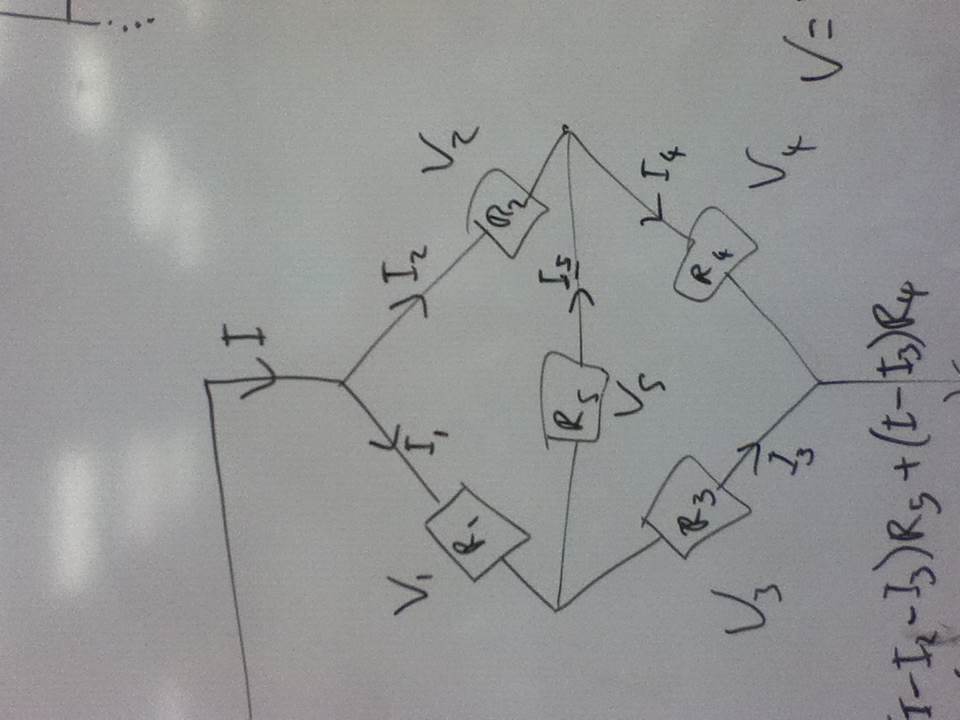Non-trivial equivalent resistance.

At school we have been learning the rules for equivalent resistance in series and parallel (which I covered at least two years ago, so I'm bored) and I asked my teacher about the circuit shown, which cannot be decomposed into a collection of series and parallel circuits.
I spent most of a lesson just bashing it with algebra, and in the end I found a three-line fraction for in terms of , , , and .
So I was wondering: is there a nice method?
No vote yet
1 vote
Easy Math Editor
This discussion board is a place to discuss our Daily Challenges and the math and science related to those challenges. Explanations are more than just a solution — they should explain the steps and thinking strategies that you used to obtain the solution. Comments should further the discussion of math and science.
When posting on Brilliant:
*italics*or_italics_**bold**or__bold__paragraph 1
paragraph 2
[example link](https://brilliant.org)> This is a quote# I indented these lines # 4 spaces, and now they show # up as a code block. print "hello world"\(...\)or\[...\]to ensure proper formatting.2 \times 32^{34}a_{i-1}\frac{2}{3}\sqrt{2}\sum_{i=1}^3\sin \theta\boxed{123}Comments
I think delta - star method can help .
Log in to reply
Can you give me an explanation/link to an explanation? Thanks
Log in to reply
@Sophie Crane It's trivial using Y-Δ transformation. Just apply this on any of the ends of R5.
Log in to reply
Thank you very much. This is an excellent technique and I had never heard of it before. Awesome! :D
If u use loop rule instead of junction rule, the expression would have been simpler. For making it even simpler u can assume the circuit to be connected across a good emf(I mean u can take different emfs if values of the resistances are known)
Log in to reply
I used both. The emf is an arbitrary value. All resistances are unknown, and are to be treated as algebraic variables. I am trying to find a general expression for the equivalent resistance in terms of these variables.
Log in to reply
That would be a very big formula
Log in to reply
It is. That's why I posted this.
But u can still assume any value for emf as that wouldn't change the equivalent resistance.
Correct me if I'm wrong, but isn't this the outline of a Wheatstone bridge? If R4R2=R3R1, then the equivalent can be easily calculated since the resistance R5 will be ineffective. Is that condition given, or the variables R1,R2,R3,R4,R5 can have any positive real value?
Log in to reply
You are correct on every count. The condition is that the resistors can take on any positive real value.
I got a fraction of 8 terms over 4 terms
Log in to reply
Did you use delta-wye or something else?